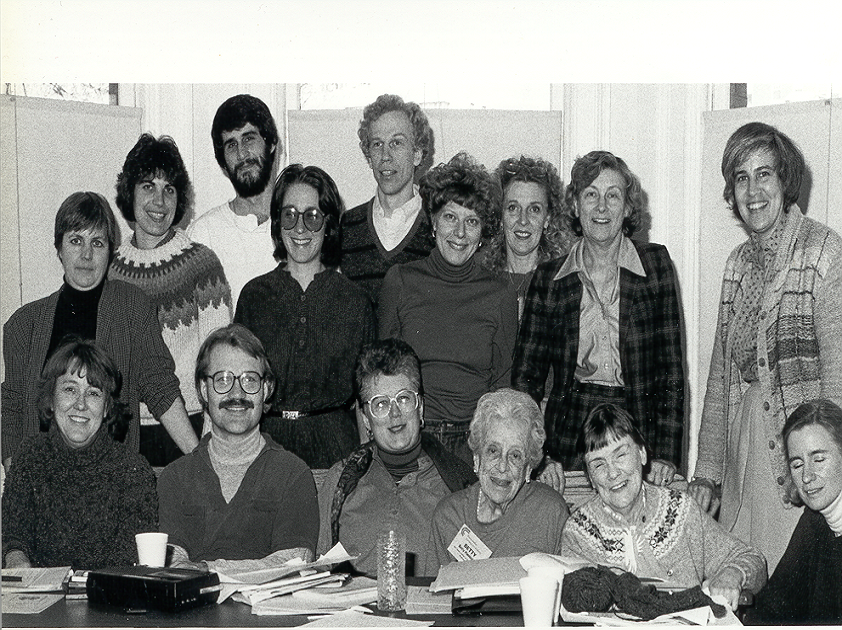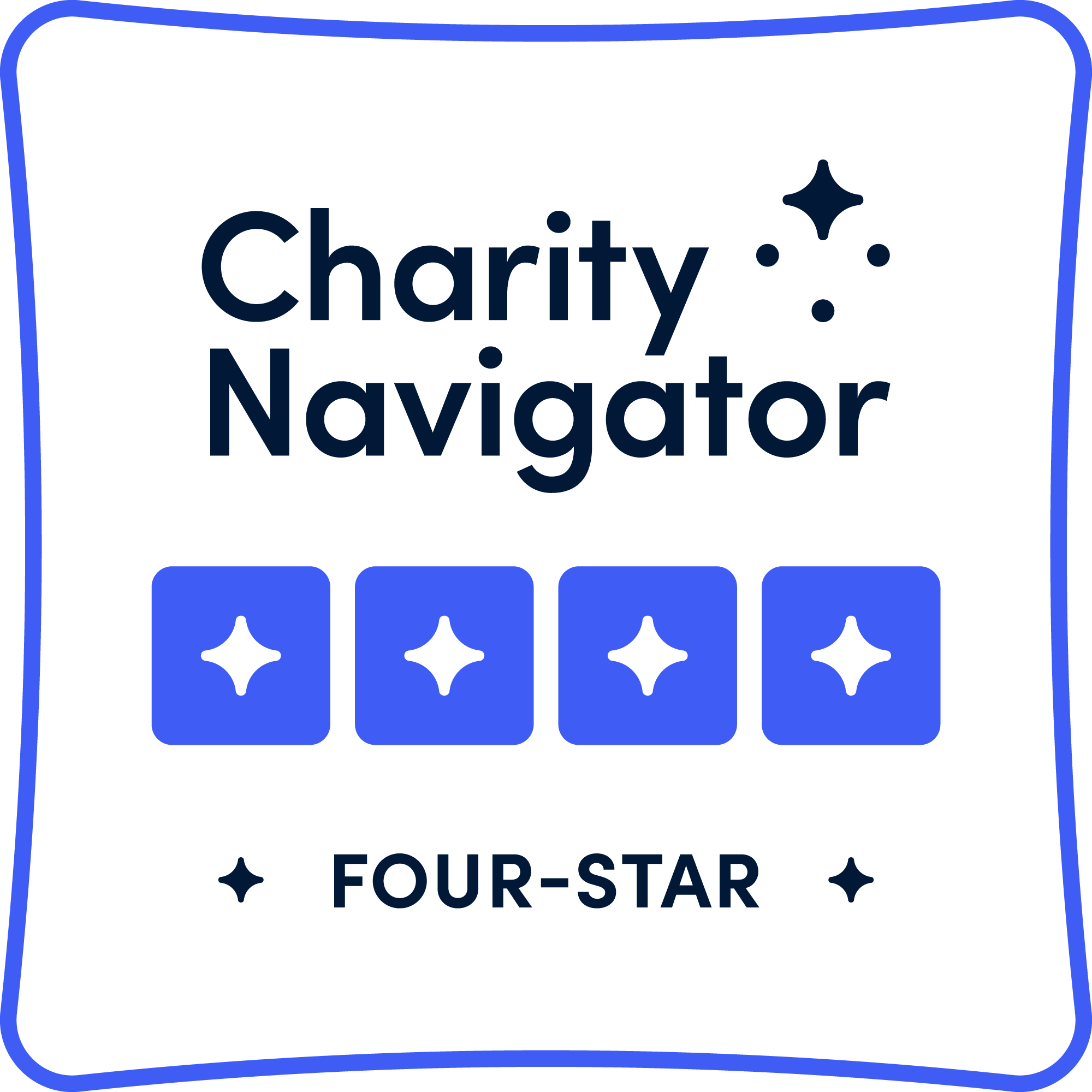The National Citizens’ Coalition for Nursing Home Reform (NCCNHR, now the National Consumer Voice for Quality Long-Term Care) was organized in June 1975 when representatives from various citizen groups and ombudsman programs met together in Washington, D.C. Their meeting preceded attendance at a conference sponsored by the American Health Care Association. The Long-Term-Care Action Project of the National Gray Panthers, which secured the consumer groups’ invitation to the conference, called the advance meeting so that representatives from the consumer groups could develop recommendations to present to the conference in a united consumer voice. On the opening day of the conference, the newly formed Coalition held a press conference and released a statement proposing several recommendations for nursing home reform.

Early members of NCCNHR
Elma Holder, co-author of Nursing Homes: A Citizens’ Action Guide, was the principal organizer of the Coalition, for which she served as Executive Director for more than twenty years. Ms. Holder worked for the National Council on Aging, Ralph Nader’s Retired Professional Action Group, the National Gray Panthers, and the National Paralegal Institute, where she conducted the first nursing home advocacy training program for state nursing home ombudsmen.
In 1977, consumer representatives met again in Washington, D.C. to finalize plans for a national conference on nursing home reform. The group also met the Associate Director of the White House Domestic Policy Staff to discuss major nursing home issues. NCCNHR held its first annual conference in May 1977, with individuals representing citizen groups, legal services programs and government agencies involved in nursing home work, including ombudsman program developmental specialists. At the meeting, the groups exchanged strategies and ideas for action and identified priority issues. NCCNHR began formalizing its organization by electing its first national steering committee (which served as a nucleus for the first Board of Directors, elected in 1978).
- February 1978 – Members of the Coalition met in a group with representatives of the Department of Health, Education and Welfare (HEW), the Administration on Aging, the Health Care Financing Administration, and the Inspector General’s office to present its first “working paper” entitled The Plight of the Nurses’ Aide in America’s Nursing Homes: An Obstacle to Quality Care for Nursing Home Residents and a preliminary report on cost-related issues in nursing homes.
- 1978 to 1981– The Coalition received a national grant from VISTA/ACTION to recruit, train, and place 40 VISTA volunteers in 13 project sites over each of the three years. The goal of this project was to increase effectiveness of the national network by strengthening and enhancing the capability of the Coalition’s local/state member groups.
- 1981 – The Coalition established its Information Clearinghouse, serving as a valuable resource to those interested in nursing home issues; expanded its focus to include Board and Care Issues; and conducted the first national survey on Medicaid discrimination. The Coalition produced A Citizens’ Action Guide to Reimbursement Issues, introducing consumer advocates to principles of reimbursement and strategies for promoting quality care through the reimbursement system.
-

Barbara Frank presents the Consumer Perspectives report
1982-1983 – When the Department of Health and Human Services proposed new regulations that the Coalition believed would severely weaken the existing system for monitoring nursing home conditions, NCCNHR spearheaded a national response to the proposal. In concert with 43 national organizations and hundreds of state and local organizations and individuals, the Coalition issued A Consumer Statement of Principles for the Nursing Home Regulatory System calling for careful review of enforcement practices and survey procedures in order to make them more effective in their evaluation of the care that nursing home residents receive under the Medicaid Program.
- 1983-1985 – In response to this call and directives from Congress, the Department of Health and Human Services funded a two-year study of nursing home regulation by the Institute of Medicine from 1983-1985. NCCNHR participated in several briefings and special work sessions with the Committee members.
- NCCNHR launched its own study in 1984 to learn how nursing home residents define quality care. In fifteen cities across the country, NCCNHR project sites convened small groups of residents for a series of three discussions to describe what constitutes quality care in a nursing home. Their ideas were compiled in a report, A Consumer Perspective on Quality Care: The Residents’ Point of View, released on April 26, 1985.
-

Betty Hamburger advocates for nursing home residents’ rights
1986 – The Institute of Medicine released “Improving the Quality of Care in Nursing Homes,” a report which highlighted the need for improvements in nursing home quality. In response, NCCNHR kicked off the Campaign for Quality Care in Nursing Homes (CQC), bringing together national groups representing various health professions, workers, providers, and consumers, to develop consensus positions to recommend to Congress.
- 1987 – The culmination of NCCNHR’s diligent efforts helped secure the passage, with bi-partisan support, of the Nursing Home Reform Act, which included a resident-focused assessment and care-planning system, mandatory training for nurse aides, residents’ rights, and other provisions supported by the CQC consensus positions.
As a coalition of residents, family members, ombudsmen, citizen advocates, policy experts, and others, NCCNHR/Consumer Voice depends on its membership to relate their daily experiences working in nursing homes in order to facilitate an exchange of ideas among advocates and to respond to national proposals affecting the nursing home system. The residents’ voice in this Coalition has grown vibrant since NCCNHR began.

Learn more about NCCNHR/Consumer Voice’s 50 year history on our anniversary webpage. As we celebrate our 50th anniversary this year, stay tuned for more as we remember our founding years and look into the future to continue to stand up and speak out for everyone receiving long-term care, their families, and those who work with them every day.



